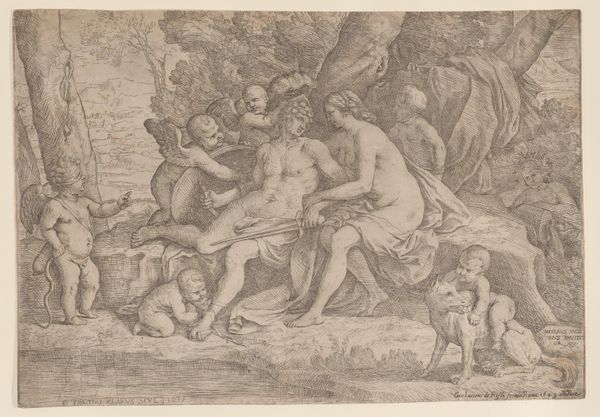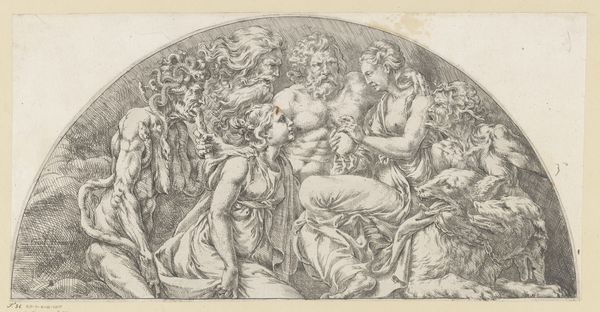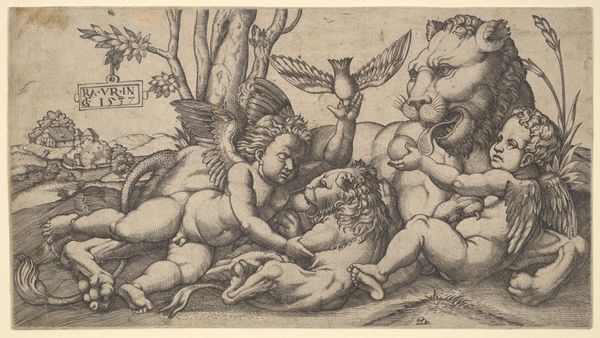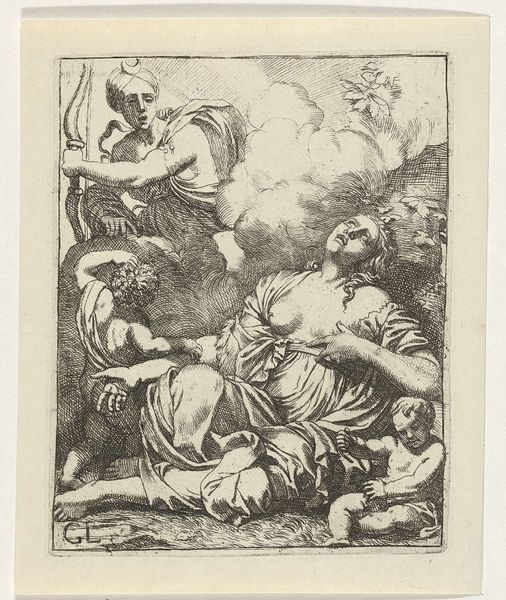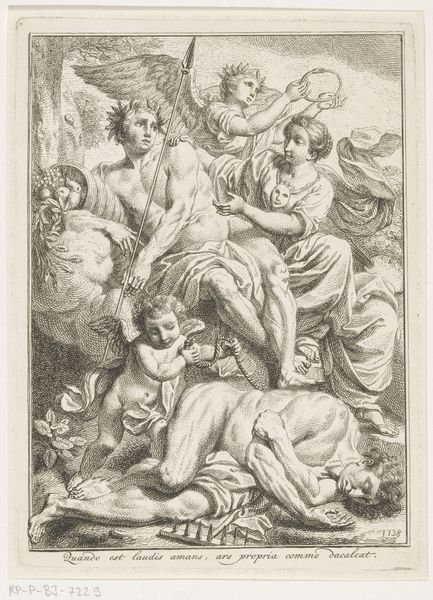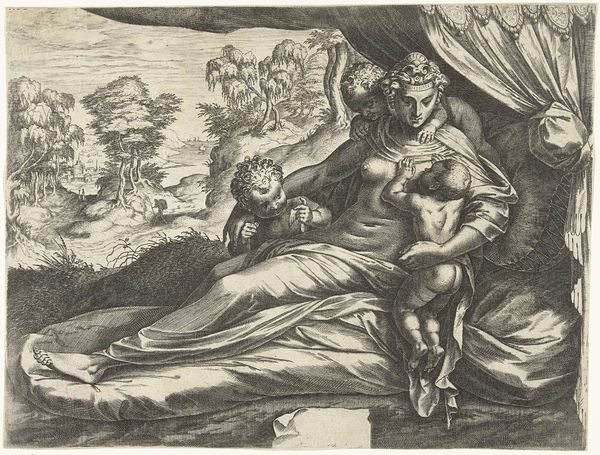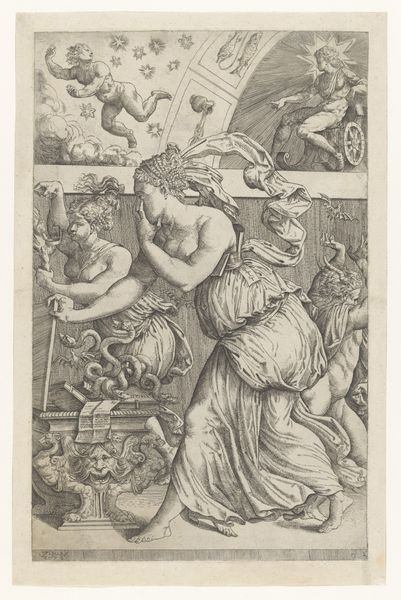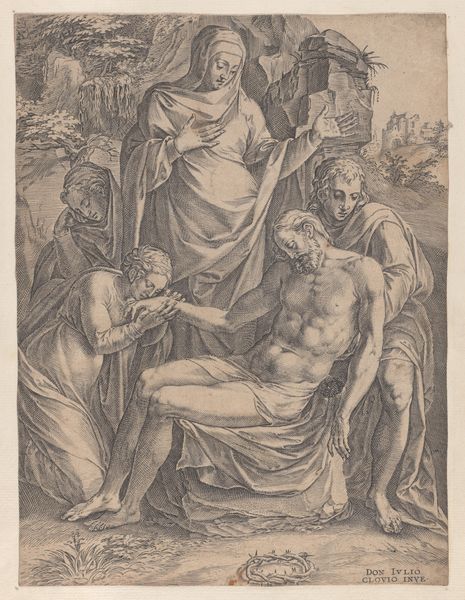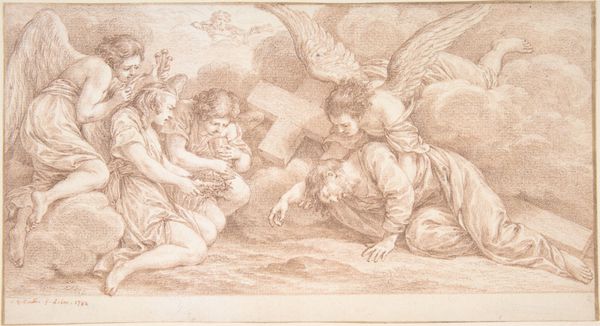
drawing, print, engraving
#
drawing
#
narrative-art
# print
#
figuration
#
11_renaissance
#
line
#
history-painting
#
northern-renaissance
#
engraving
Dimensions: Sheet: 1 7/8 × 3 1/16 in. (4.8 × 7.8 cm)
Copyright: Public Domain
This tiny engraving of Samson and Delilah was made by Georg Pencz, a German artist, sometime in the first half of the 16th century. Pencz worked with the intaglio process, cutting lines into a copper plate with a tool called a burin, and then inking and printing the plate. The relative ease of this reproductive technique, compared to say painting, meant that Pencz and his contemporaries could circulate images of well-known biblical scenes far and wide, to a relatively broad audience. The labor involved was of a different kind: not in the original invention of the composition, but in its meticulous transfer to a matrix for duplication. Look closely, and you'll see that the lines are all very precise, and closely packed together to create tone, shadow and texture. Pencz’s skill in manipulating the burin allowed him to depict not only the drama of the scene, but also the textures of hair, fabric, and even skin. Ultimately, though, this is printmaking as industrial production – images made to be distributed and consumed. And in that sense, it's not so different from how images circulate today.
Comments
No comments
Be the first to comment and join the conversation on the ultimate creative platform.
